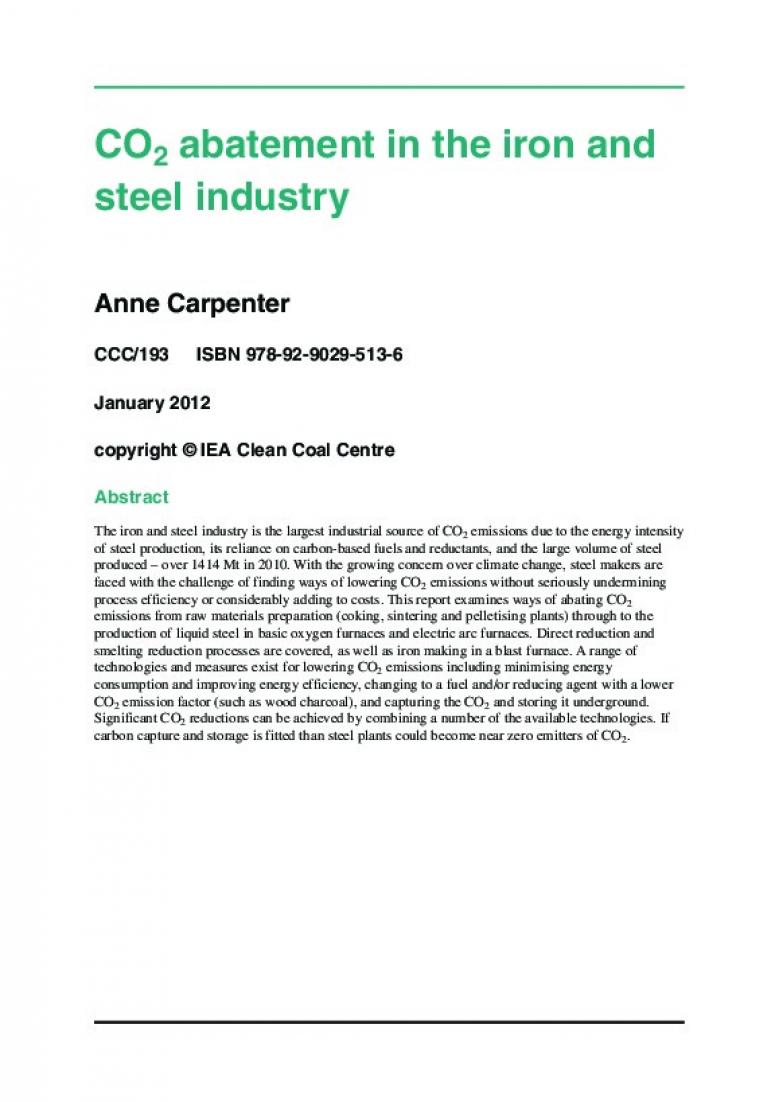CCC/193 ISBN 978-92-9029-513-6
January 2012
copyright © IEA Clean Coal Centre
Abstract
The iron and steel industry is the largest industrial source of CO2 emissions due to the energy intensity
of steel production, its reliance on carbon-based fuels and reductants, and the large volume of steel
produced – over 1414 Mt in 2010. With the growing concern over climate change, steel makers are
faced with the challenge of finding ways of lowering CO2 emissions without seriously undermining
process efficiency or considerably adding to costs. This report examines ways of abating CO2
emissions from raw materials preparation (coking, sintering and pelletising plants) through to the
production of liquid steel in basic oxygen furnaces and electric arc furnaces. Direct reduction and
smelting reduction processes are covered, as well as iron making in a blast furnace. A range of
technologies and measures exist for lowering CO2 emissions including minimising energy
consumption and improving energy efficiency, changing to a fuel and/or reducing agent with a lower
CO2 emission factor (such as wood charcoal), and capturing the CO2 and storing it underground.
Significant CO2 reductions can be achieved by combining a number of the available technologies. If
carbon capture and storage is fitted than steel plants could become near zero emitters of CO2.
| Attachment | Size |
|---|---|
| 1000.49 KB |


